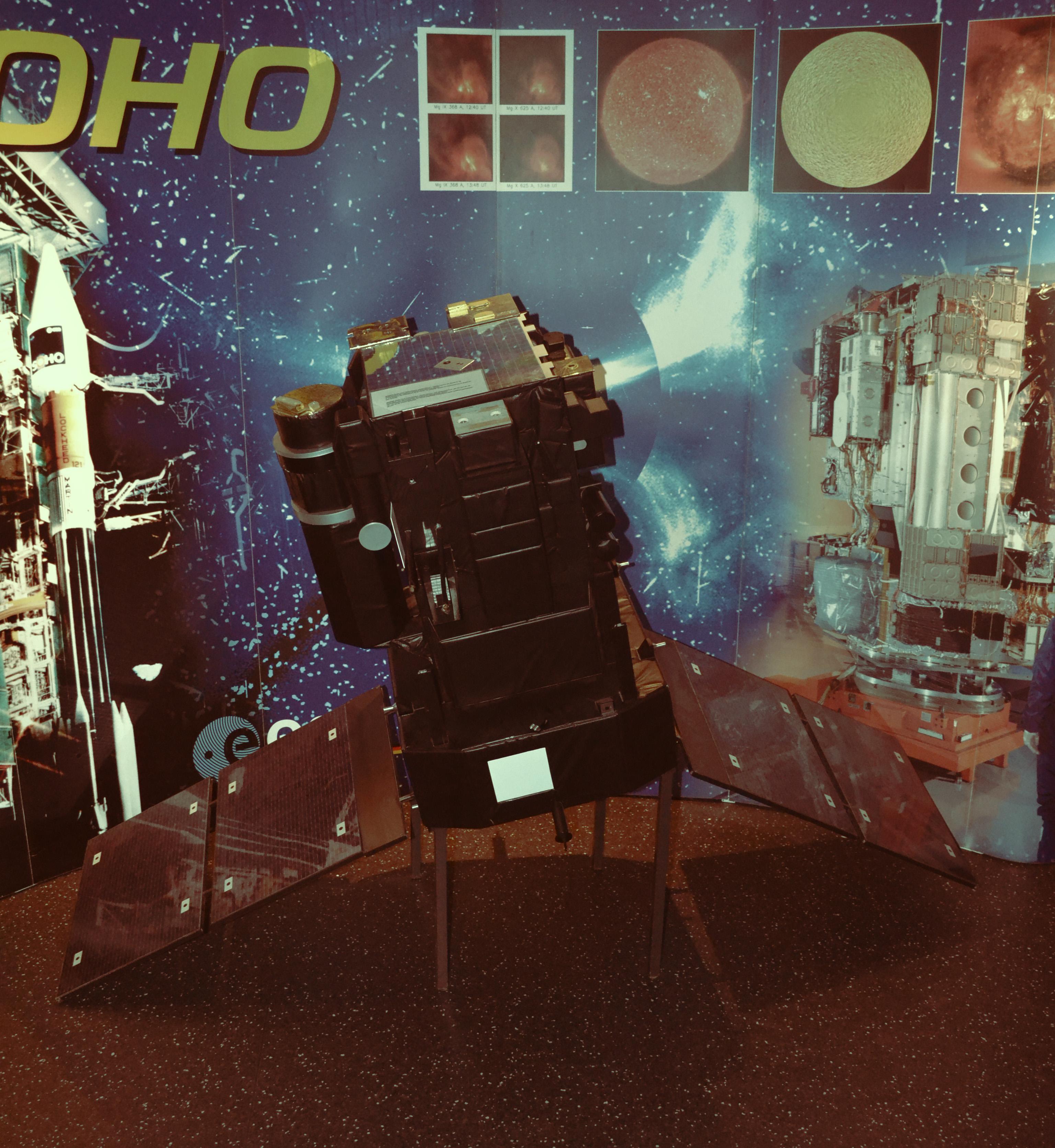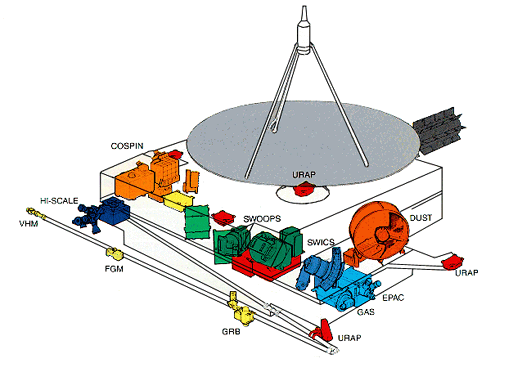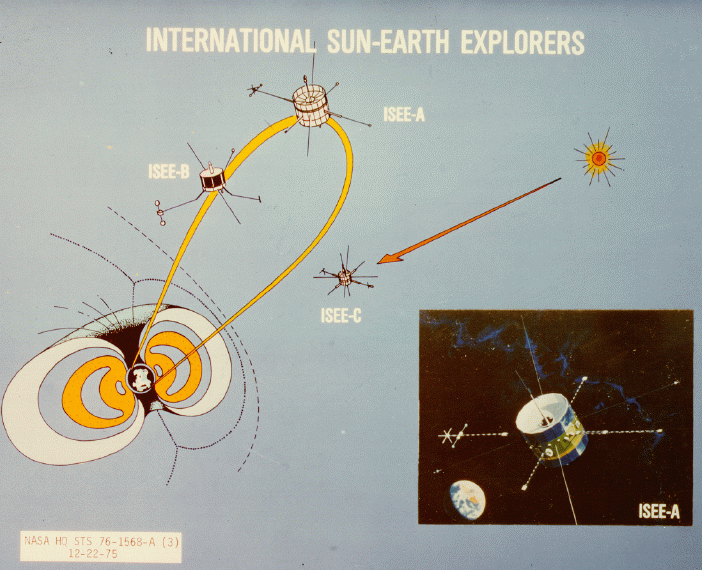|
List Of Solar System Probes
This is a list of space probes that have left Earth orbit (or were launched with that intention but failed), organized by their planned destination. It includes planetary probes, solar probes, and probes to asteroids and comets, but excludes lunar missions, which are listed separately at List of lunar probes and List of Apollo missions. Flybys (such as gravity assists) that were incidental to the main purpose of the mission are also included. Flybys of Earth are listed separately at List of Earth flybys. Confirmed future probes are included, but missions that are still at the concept stage, or which never progressed beyond the concept stage, are not. Key Colour key: * † means "tentatively identified", as classified by NASA. These are Cold War-era Soviet missions, mostly failures, about which few or no details have been officially released. The information given may be speculative. * Date is the date of: :* closest encounter (flybys) :* impact (impactors) :* orbital inserti ... [...More Info...] [...Related Items...] OR: [Wikipedia] [Google] [Baidu] |
Space Probe
A space probe is an artificial satellite that travels through space to collect scientific data. A space probe may orbit Earth; approach the Moon; travel through interplanetary space; flyby, orbit, or land or fly on other planetary bodies; or enter interstellar space. Many countries and private companies have launched probes to planets, asteroids, moons around the Solar System, including the Soviet Union, the United States, India, and many more. History On 4 October 1957, the first artificial satellite to orbit Earth was Sputnik 1, launched by the USSR. Four months later, on 1 February 1958, Explorer 1 was launched by the United States, being the first space probe. Explorer 1, collecting data on temperature, cosmic rays, and micrometeorite impacts. The first attempted lunar probe was the Luna E-1 No.1, launched on 23 September 1958. The goal of a lunar probe repeatedly failed until 4 January 1959 when Luna 1 orbited around the moon and then the sun. The success of these ... [...More Info...] [...Related Items...] OR: [Wikipedia] [Google] [Baidu] |
NASA SOHO Spacecraft
The National Aeronautics and Space Administration (NASA ) is an independent agency of the US federal government responsible for the civil space program, aeronautics research, and space research. NASA was established in 1958, succeeding the National Advisory Committee for Aeronautics (NACA), to give the U.S. space development effort a distinctly civilian orientation, emphasizing peaceful applications in space science. NASA has since led most American space exploration, including Project Mercury, Project Gemini, the 1968-1972 Apollo Moon landing missions, the Skylab space station, and the Space Shuttle. NASA supports the International Space Station and oversees the development of the Orion spacecraft and the Space Launch System for the crewed lunar Artemis program, Commercial Crew spacecraft, and the planned Lunar Gateway space station. The agency is also responsible for the Launch Services Program, which provides oversight of launch operations and countdown management for ... [...More Info...] [...Related Items...] OR: [Wikipedia] [Google] [Baidu] |
Solar And Heliospheric Observatory
The Solar and Heliospheric Observatory (SOHO) is a European Space Agency (ESA) spacecraft built by a European industrial consortium led by Matra Marconi Space (now Airbus Defence and Space) that was launched on a Lockheed Martin Atlas IIAS launch vehicle on 2 December 1995, to study the Sun. It has also discovered over 4,000 comets.(2,703 discoveries as of 21 April 2014) It began normal operations in May 1996. It is a joint project between the (ESA) and . SOHO was part of the Interna ... [...More Info...] [...Related Items...] OR: [Wikipedia] [Google] [Baidu] |
Wind Probe
Wind is the natural movement of air or other gases relative to a planet's surface. Winds occur on a range of scales, from thunderstorm flows lasting tens of minutes, to local breezes generated by heating of land surfaces and lasting a few hours, to global winds resulting from the difference in absorption of solar energy between the climate zones on Earth. The two main causes of large-scale atmospheric circulation are the differential heating between the equator and the poles, and the rotation of the planet (Coriolis effect). Within the tropics and subtropics, thermal low circulations over terrain and high plateaus can drive monsoon circulations. In coastal areas the sea breeze/land breeze cycle can define local winds; in areas that have variable terrain, mountain and valley breezes can prevail. Winds are commonly classified by their spatial scale, their speed and direction, the forces that cause them, the regions in which they occur, and their effect. Winds have various aspe ... [...More Info...] [...Related Items...] OR: [Wikipedia] [Google] [Baidu] |
Ulysses Spacecraft
''Ulysses'' ( , ) was a robotic space probe whose primary mission was to orbit the Sun and study it at all latitudes. It was launched in 1990 and made three "fast latitude scans" of the Sun in 1994/1995, 2000/2001, and 2007/2008. In addition, the probe studied several comets. ''Ulysses'' was a joint venture of the European Space Agency (ESA) and the United States' National Aeronautics and Space Administration (NASA), under leadership of ESA with participation from Canada's National Research Council. The last day for mission operations on ''Ulysses'' was 30 June 2009. To study the Sun at all latitudes, the probe needed to change its orbital inclination and leave the plane of the Solar System. To change the orbital inclination of a spacecraft to about 80° requires a large change in heliocentric velocity, the energy to achieve which far exceeded the capabilities of any launch vehicle. To reach the desired orbit around the Sun, the mission's planners chose a gravity assist mane ... [...More Info...] [...Related Items...] OR: [Wikipedia] [Google] [Baidu] |
European Space Agency
, owners = , headquarters = Paris, Île-de-France, France , coordinates = , spaceport = Guiana Space Centre , seal = File:ESA emblem seal.png , seal_size = 130px , image = Views in the Main Control Room (12052189474).jpg , size = , caption = , acronym = , established = , employees = 2,200 , administrator = Director General Josef Aschbacher , budget = €7.2 billion (2022) , language = English and French (working languages) , website = , logo = European Space Agency logo.svg , logo_caption = Logo , image_caption = European Space Operations Centre (ESOC) Main Control Room The European Space Agency (ESA; french: Agence spatiale européenne , it, Agenzia Spaziale Europea, es, Agencia Espacial Europea ASE; german: Europäische Weltraumorganisation) is an intergovernmental organisation of 22 member states dedicated to the exploration of space. Established in 1975 and headquartered i ... [...More Info...] [...Related Items...] OR: [Wikipedia] [Google] [Baidu] |
Ulysses Probe
''Ulysses'' ( , ) was a robotic space probe whose primary mission was to orbit the Sun and study it at all latitudes. It was launched in 1990 and made three "fast latitude scans" of the Sun in 1994/1995, 2000/2001, and 2007/2008. In addition, the probe studied several comets. ''Ulysses'' was a joint venture of the European Space Agency (ESA) and the United States' National Aeronautics and Space Administration (NASA), under leadership of ESA with participation from Canada's National Research Council. The last day for mission operations on ''Ulysses'' was 30 June 2009. To study the Sun at all latitudes, the probe needed to change its orbital inclination and leave the plane of the Solar System. To change the orbital inclination of a spacecraft to about 80° requires a large change in heliocentric velocity, the energy to achieve which far exceeded the capabilities of any launch vehicle. To reach the desired orbit around the Sun, the mission's planners chose a gravity assist mane ... [...More Info...] [...Related Items...] OR: [Wikipedia] [Google] [Baidu] |
ISEE-3
The International Cometary Explorer (ICE) spacecraft (designed and launched as the International Sun-Earth Explorer-3 (ISEE-3) satellite), was launched 12 August 1978, into a heliocentric orbit. It was one of three spacecraft, along with the mother/daughter pair of ISEE-1 and ISEE-2, built for the International Sun-Earth Explorer (ISEE) program, a joint effort by NASA and European Space Research Organisation, ESRO/European Space Agency, ESA to study the interaction between the Earth's magnetic field and the solar wind. ISEE-3 was the first spacecraft to be placed in a halo orbit at the Earth-Sun Lagrange point. Renamed ICE, it became the first spacecraft to visit a comet, passing through the plasma tail of comet 21P/Giacobini–Zinner, Giacobini-Zinner within about of the nucleus on 11 September 1985. NASA suspended routine contact with ISEE-3 in 1997, and made brief status checks in 1999 and 2008. On 29 May 2014, two-way communication with the spacecraft was reestablished ... [...More Info...] [...Related Items...] OR: [Wikipedia] [Google] [Baidu] |
Helios B
''Helios-A'' and ''Helios-B'' (after launch renamed ' and ') are a pair of probes that were launched into heliocentric orbit to study solar processes. As a joint venture between German Aerospace Center (DLR) and NASA, the probes were launched from Cape Canaveral Air Force Station, Florida, on December10, 1974, and January15, 1976, respectively. The Helios project set a maximum speed record for spacecraft of . ''Helios-B'' performed the closest flyby of the Sun of any spacecraft until that time. The probes are no longer functional, but as of 2022 remain in elliptical orbits around the Sun. Construction The Helios project was a joint venture of West Germany's space agency DLR (70 percent share) and NASA (30 percent share). As built by the main contractor, Messerschmitt-Bölkow-Blohm, they were the first space probes built outside the United States and the Soviet Union to leave Earth orbit. Structure The two ''Helios'' probes look similar. ''Helios-A'' has a mass of , and ... [...More Info...] [...Related Items...] OR: [Wikipedia] [Google] [Baidu] |






